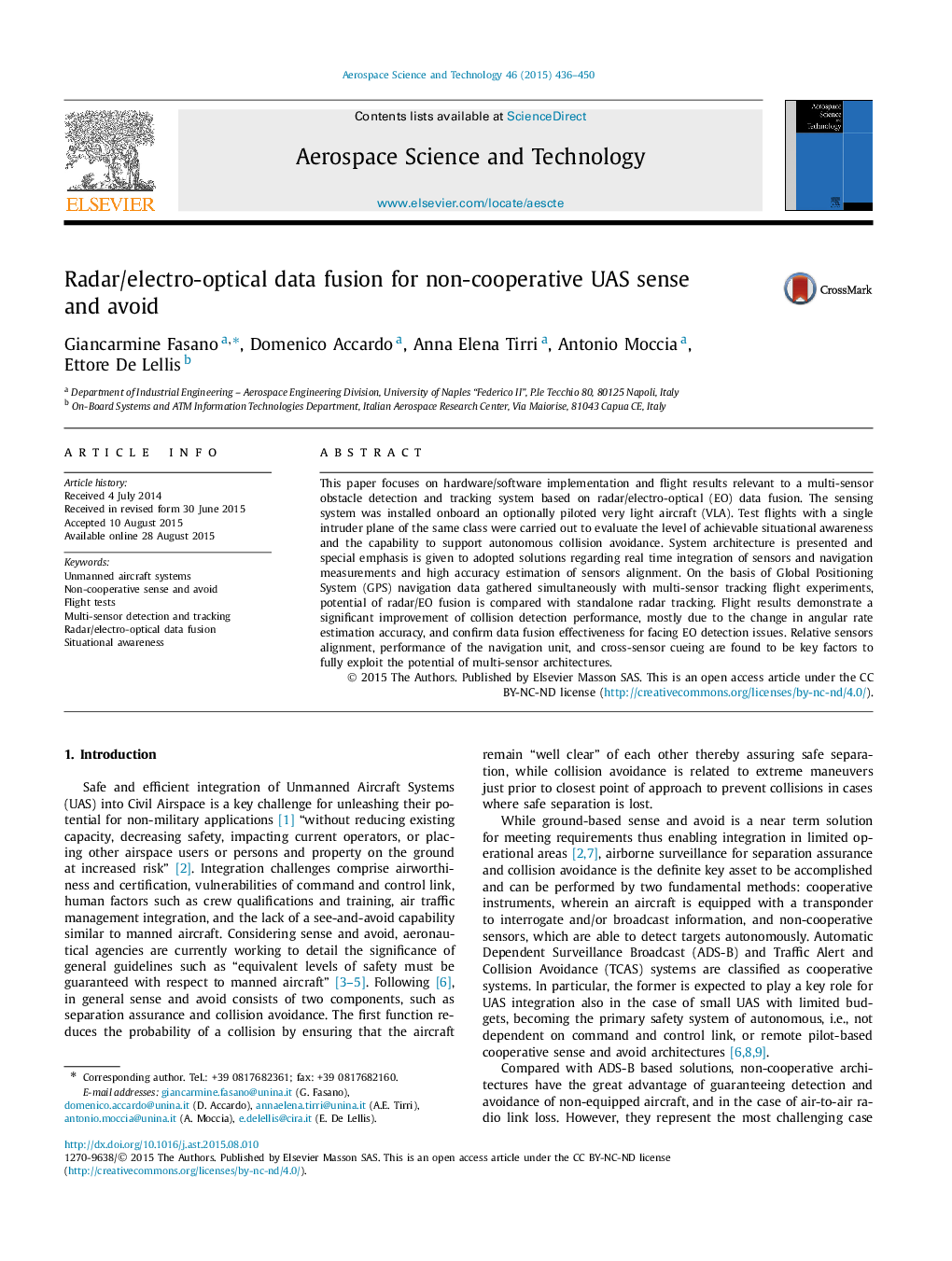| Article ID | Journal | Published Year | Pages | File Type |
|---|---|---|---|---|
| 8058894 | Aerospace Science and Technology | 2015 | 15 Pages |
Abstract
This paper focuses on hardware/software implementation and flight results relevant to a multi-sensor obstacle detection and tracking system based on radar/electro-optical (EO) data fusion. The sensing system was installed onboard an optionally piloted very light aircraft (VLA). Test flights with a single intruder plane of the same class were carried out to evaluate the level of achievable situational awareness and the capability to support autonomous collision avoidance. System architecture is presented and special emphasis is given to adopted solutions regarding real time integration of sensors and navigation measurements and high accuracy estimation of sensors alignment. On the basis of Global Positioning System (GPS) navigation data gathered simultaneously with multi-sensor tracking flight experiments, potential of radar/EO fusion is compared with standalone radar tracking. Flight results demonstrate a significant improvement of collision detection performance, mostly due to the change in angular rate estimation accuracy, and confirm data fusion effectiveness for facing EO detection issues. Relative sensors alignment, performance of the navigation unit, and cross-sensor cueing are found to be key factors to fully exploit the potential of multi-sensor architectures.
Related Topics
Physical Sciences and Engineering
Engineering
Aerospace Engineering
Authors
Giancarmine Fasano, Domenico Accardo, Anna Elena Tirri, Antonio Moccia, Ettore De Lellis,
